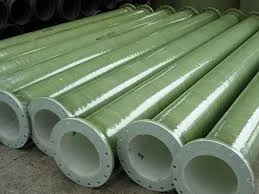
-
 Afrikaans
Afrikaans -
 Albanian
Albanian -
 Amharic
Amharic -
 Arabic
Arabic -
 Armenian
Armenian -
 Azerbaijani
Azerbaijani -
 Basque
Basque -
 Belarusian
Belarusian -
 Bengali
Bengali -
 Bosnian
Bosnian -
 Bulgarian
Bulgarian -
 Catalan
Catalan -
 Cebuano
Cebuano -
 China
China -
 China (Taiwan)
China (Taiwan) -
 Corsican
Corsican -
 Croatian
Croatian -
 Czech
Czech -
 Danish
Danish -
 Dutch
Dutch -
 English
English -
 Esperanto
Esperanto -
 Estonian
Estonian -
 Finnish
Finnish -
 French
French -
 Frisian
Frisian -
 Galician
Galician -
 Georgian
Georgian -
 German
German -
 Greek
Greek -
 Gujarati
Gujarati -
 Haitian Creole
Haitian Creole -
 hausa
hausa -
 hawaiian
hawaiian -
 Hebrew
Hebrew -
 Hindi
Hindi -
 Miao
Miao -
 Hungarian
Hungarian -
 Icelandic
Icelandic -
 igbo
igbo -
 Indonesian
Indonesian -
 irish
irish -
 Italian
Italian -
 Japanese
Japanese -
 Javanese
Javanese -
 Kannada
Kannada -
 kazakh
kazakh -
 Khmer
Khmer -
 Rwandese
Rwandese -
 Korean
Korean -
 Kurdish
Kurdish -
 Kyrgyz
Kyrgyz -
 Lao
Lao -
 Latin
Latin -
 Latvian
Latvian -
 Lithuanian
Lithuanian -
 Luxembourgish
Luxembourgish -
 Macedonian
Macedonian -
 Malgashi
Malgashi -
 Malay
Malay -
 Malayalam
Malayalam -
 Maltese
Maltese -
 Maori
Maori -
 Marathi
Marathi -
 Mongolian
Mongolian -
 Myanmar
Myanmar -
 Nepali
Nepali -
 Norwegian
Norwegian -
 Norwegian
Norwegian -
 Occitan
Occitan -
 Pashto
Pashto -
 Persian
Persian -
 Polish
Polish -
 Portuguese
Portuguese -
 Punjabi
Punjabi -
 Romanian
Romanian -
 Russian
Russian -
 Samoan
Samoan -
 Scottish Gaelic
Scottish Gaelic -
 Serbian
Serbian -
 Sesotho
Sesotho -
 Shona
Shona -
 Sindhi
Sindhi -
 Sinhala
Sinhala -
 Slovak
Slovak -
 Slovenian
Slovenian -
 Somali
Somali -
 Spanish
Spanish -
 Sundanese
Sundanese -
 Swahili
Swahili -
 Swedish
Swedish -
 Tagalog
Tagalog -
 Tajik
Tajik -
 Tamil
Tamil -
 Tatar
Tatar -
 Telugu
Telugu -
 Thai
Thai -
 Turkish
Turkish -
 Turkmen
Turkmen -
 Ukrainian
Ukrainian -
 Urdu
Urdu -
 Uighur
Uighur -
 Uzbek
Uzbek -
 Vietnamese
Vietnamese -
 Welsh
Welsh -
 Bantu
Bantu -
 Yiddish
Yiddish -
 Yoruba
Yoruba -
 Zulu
Zulu
Challenges of Drilling Through Limestone and Strategies to Overcome Them
Challenges of Drilling Through Limestone
Drilling through limestone can present a range of challenges that both engineers and geologists must navigate. As a widely distributed sedimentary rock composed primarily of calcium carbonate, limestone is a vital resource in various industries, including construction, agriculture, and energy. However, the unique physical properties of limestone can complicate drilling operations, leading to potential setbacks and increased costs.
Challenges of Drilling Through Limestone
Furthermore, the presence of fissures and cavities within limestone can create additional complications. Limestone is known for its karst formations, which consist of underground rivers, caves, and voids formed through the dissolution of the rock by groundwater over thousands of years. When drilling, these cavities can cause instability, leading to unexpected collapses or drill bit jams. Operators must therefore conduct thorough geological surveys and implement strategies to stabilize the drilling site, often adding time and complexity to the project.
drilling through limestone is challenging.

Hydration is another critical factor during the drilling process. Limestone is relatively soluble in acidic environments. If drilling fluids are not properly managed, the chemical reaction between the limestone and the fluids can lead to uncontrolled dissolution, creating larger voids and potential blowouts. This scenario not only risks damage to drilling equipment but also poses environmental hazards. Ensuring the right balance of pH and chemical composition in drilling fluids is essential to mitigate this risk.
Moreover, the physical characteristics of limestone can lead to significant debris generation during drilling. As drill bits break through the rock, the resulting fragments can create challenges in terms of borehole stability and clogging equipment. Effective circulation of drilling fluids is crucial to remove this debris and maintain efficient drilling operations. However, if not managed properly, debris can lead to drill string failures or increased wear on equipment, further complicating the drilling process.
Safety is another paramount concern when drilling through limestone. The equipment used in drilling operations is often heavy and can pose hazards to workers on-site. Additionally, the risk of encountering gas pockets or other hazardous materials within limestone formations requires strict adherence to safety protocols and regular monitoring. Operators must ensure that workers are equipped with appropriate safety gear and that emergency procedures are in place to address any incidents that may arise during drilling.
In conclusion, drilling through limestone is a complex endeavor that requires a deep understanding of the rock's properties and careful planning to mitigate the associated challenges. From dealing with variable hardness and geological conditions to managing chemical reactions and debris, the process demands a blend of technical skill and knowledge. As the demand for limestone remains strong, improving drilling techniques and technologies will be essential for addressing these challenges efficiently and safely. By investing in research and innovation, the industry can continue to harness the valuable resources that limestone offers while minimizing the associated risks and impacts.
Latest news
-
Exploring the Benefits of Top Hammer Drifter Rods for Enhanced Drilling PerformanceNewsJun.10,2025
-
High-Precision Fiberglass Winding Machine for GRP/FRP Pipe Production – Reliable & Efficient SolutionsNewsJun.10,2025
-
FRP Pipes & Fittings for Shipbuilding - Corrosion-Resistant & LightweightNewsJun.09,2025
-
Premium FRP Flooring Solutions Durable & Slip-ResistantNewsJun.09,2025
-
Premium Fiberglass Rectangular Tanks Durable & Lightweight SolutionNewsJun.09,2025
-
Tapered Drill String Design Guide Durable Performance & UsesNewsJun.09,2025









